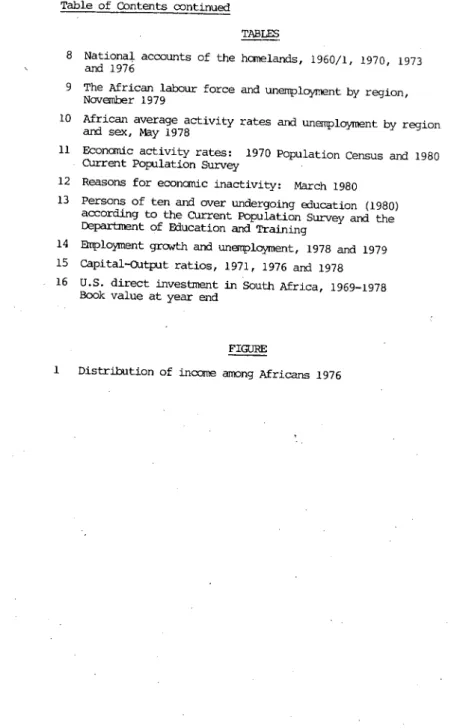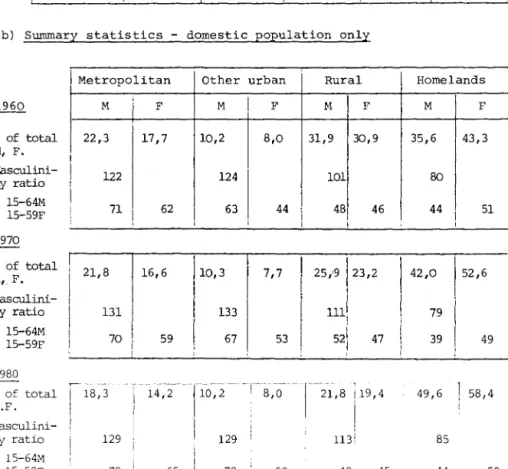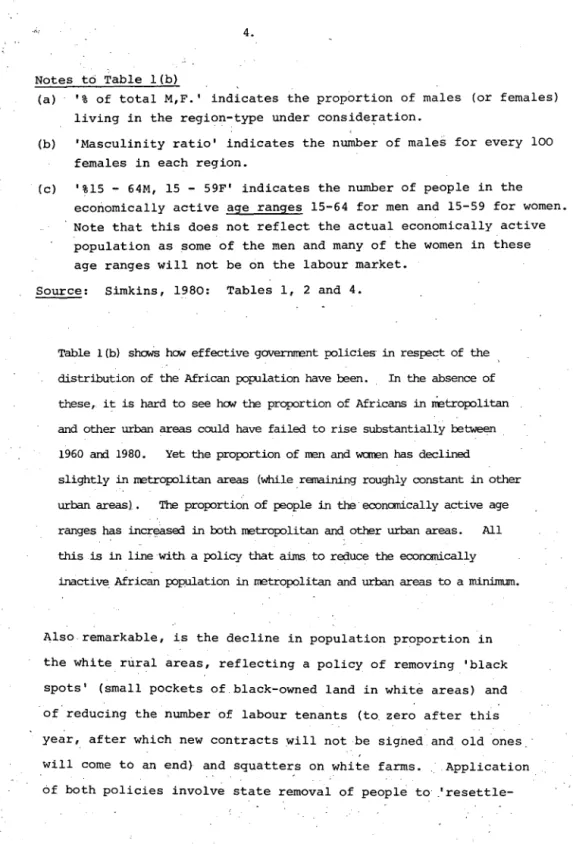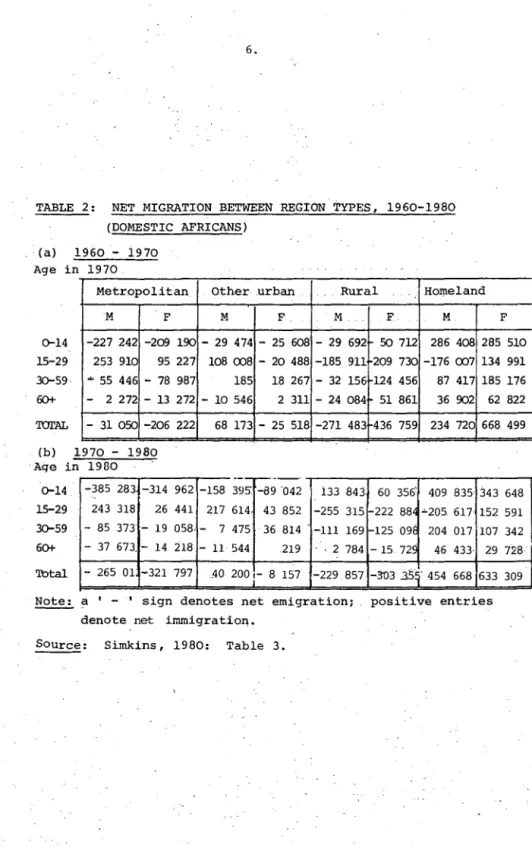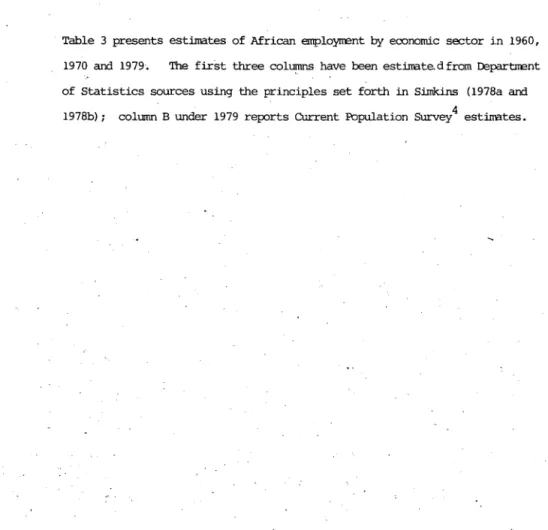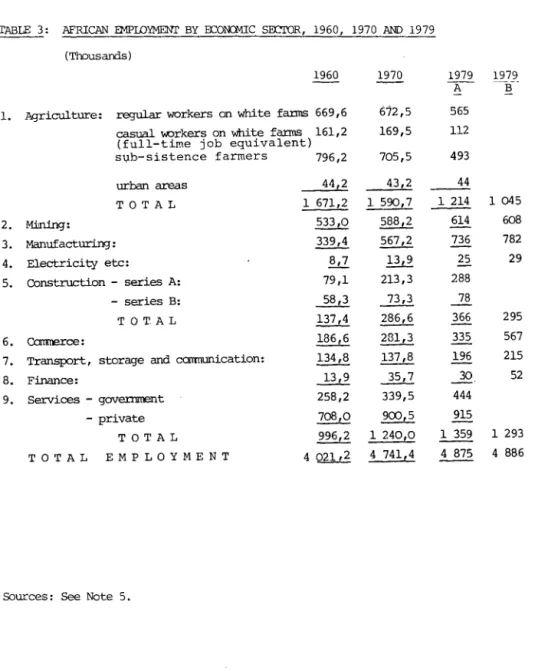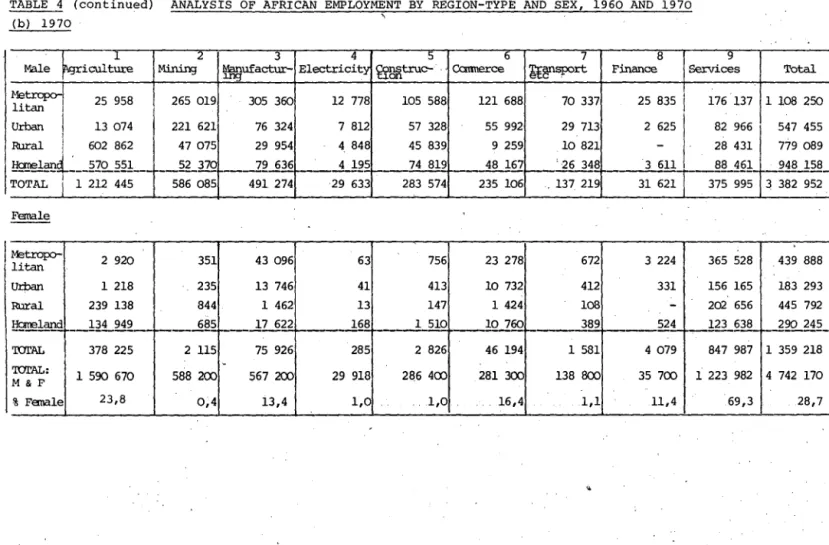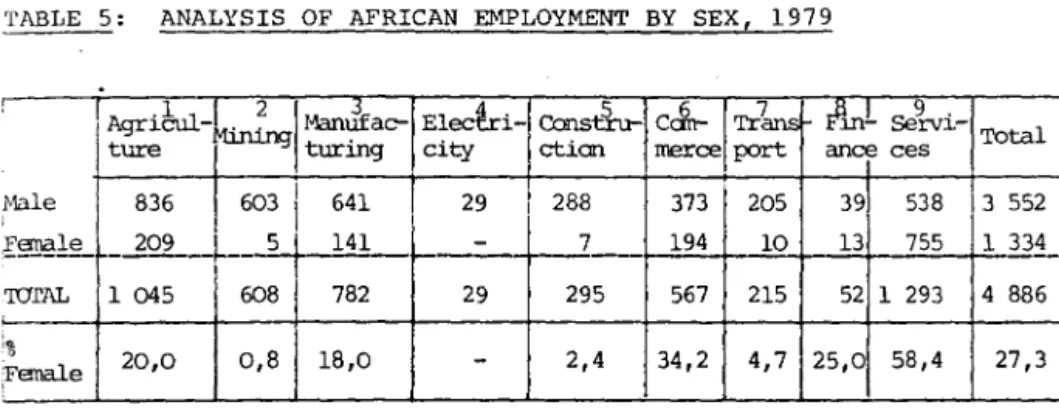The purpose of Part I will be to establish conclusions that can be used in the argument of Part II. Absent this, it is difficult to see how the proportion of Africans in retropolitan and other urban areas would not have increased substantially between 1960 and 1980. The share of people in the economically active age groups has increased in both metropolitan and urban areas. other urban areas.
Also notable is the decline in the population share in white rural areas, reflecting a policy to remove 'black spots' (small plots of black-owned land in white areas) and to reduce the number of labor tenants (to zero after this year ). , after which new contracts will not be granted and old ones will end) and squatters on white farms. Both shifts have one result: a radical increase in the share of Africans living in the homelands. The shift in population share in each region type. reflects net migration between them.
The situation is different in the case of youth pallor. although much smaller in size than in the case of nen) in metropolitan areas and other urban areas. There is rather poor agreement in the non-llerical finance sector not very irrp:>rp, which can probably be attributed to sample fluctuations. In the absence of employment figures, the country's total agricultural output was divided by the income (Rl 14 a year at 1951/2 prices) estimated by the Tomlinson Commission as sufficient to support an African family (consisting of 2.46 economically active persons (on average) permanently on land, to obtain employment estimates.
This trend appears to have decreased significantly in the 1970s, as shown in Table 5.
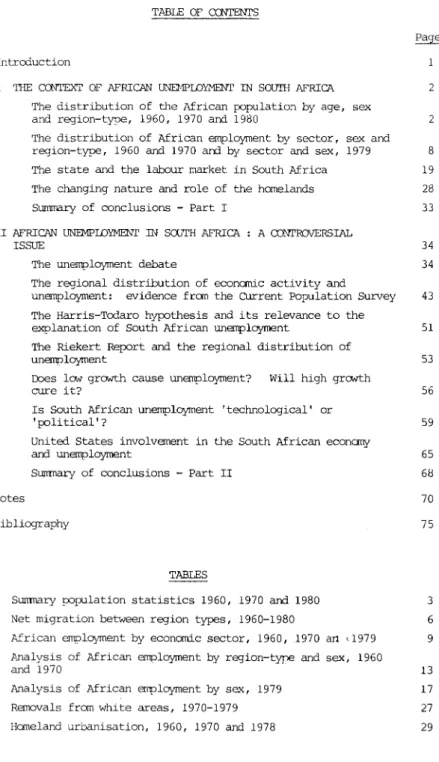
The way in which the state intervenes in the African labor market is complex and takes place in terms of numerous legislation items. People earning intermediate incomes are predominantly migrants in mining and in the lower areas of the service sector (domestic servants). Few insiders are to be found. in mining and relatively few in domestic service, the lowest paying sectors of the economy outside of agriculture.
The departures of working tenants and residents and people called 'black spots' under the homeland consolidation program were very extensive in the 1960s and 1970s. This can only be called displacement urbanization: in the absence of flow control, many of those involved would have gone to metropolitan or urban areas. In his presence they live an urban life in their homeland, with much more rudimentary comforts than in 'white' cities.
Another form of dependence, less extensive in terms of the money involved, is involved in the · high share of services in GDP - much of this is financed by Pretoria in the form of grants-in-aid to home country administrations. Africans share in the rising real wages in 'white' South Africa through commuter pay packages and migrant remittances. All the state has managed to do is stabilize regional job shares in the face of an underlying trend towards urban concentration.
This disequilibrium will play an important role in the explanation of unemployment that follows in part II. Alongside these trends and to a considerable extent dependent on them, there has been a large displacement of Africans off the land, both in 'white' areas (here mainly as a result of emigration) and in the homeland. Another effect of this change (although change is not the only explanation for it) has been the increasing entry of women into the labor market, an attempt which was considerably absorbed in the boom years of the 60s. but which encountered more severe conditions in the seventies.
Most of the rest of this research will be from a position (ii) perspective: it is important to understand what is involved in the other positions. Below is a brief account of each: a) Kantor on the impossibility of substantial unemployment. In light of the income distribution in Figure 1 and the income from the home country, figures from Table 8, this can only be described as a bizarre misunderstanding of the situation. Simkins, 1978b: 84). iii) that in light of the size of the marginal pool, which is subject to the outcome of ongoing 'negotiations' between this pool and a much more powerful, advanced bloc, there are proposals to that effect.
It cannot be denied that there is some scope for expanded employment in the metropolitan and urban areas; the extent of the informal sector in the squatter settlement at Crossroads in Cape Town suggests this (see Maree and Cornell, 1977). The Current Population Survey published the following estimates of the size of the labor force (economically active population) and of unemployment in the four regional types of South Africa in November 1979.
![TABLE 4: (continued) ANALYSIS OF AFRICAN EMPLOYMENT BY REGION-TYPE AND SEX, 1960 AND 1970 (d) ~t~_<!.-i§.H:~t;!.91l_oL~1~tJ_.!~~2!.l<.!X}]Q](https://thumb-ap.123doks.com/thumbv2/pubpdfnet/10553015.0/21.885.30.855.48.606/table-continued-analysis-african-employment-region-type-sex.webp)
R1208: VIII 14(4)
1978 Buitelandse Arbeid vloei na Suid-Afrika en Werkloosheid in Suider-Afrika, in Simkins CEvl en Clarke D. L J Loots: In Evaluation of the Current Population Survey (An Evaluation of the Current Population Survey) C E W Simkins: Current Population Survey and South African unemployment: Sommige raaisels. P J D du Toit: Arbeidsbenutting as deel van die Ekonomiese Ontwikkelingsprogram (Arbeidsbenutting as deel van die Ekonomiese Ontwikkelingsprogram) J A Vermaak: Arbeidsaanbod in RSA met verwysing na die ontledingsmoontlikhede van die deurlopende bevolkingsopname in verband met die werk Bevolkingsdeelname ( Arbeidsaanbod in die Republiek van Suid-Afrika met verwysing na die analitiese vermoëns van die huidige Bevolkingsopname met betrekking tot Bevolkingsarbeidsmagdeelname).
E Smit: Ontledin0smoontlikhede van die Lopende Bevolkingsopname insake Mobiliteit tussen Sektore, Beroepe en Streke (Analytical possibilities of the current population survey in relation to mobility'· . between industrial sectors, occupations and regions). 1977 Conditions of Labor Supply and Employment of African Workers in Urban Industries in South Africa. 1977 South Africa is running out of unskilled labour. eds) F Wilson, A Kooy and D Hendrie, Farm Labor in South Africa.
1977 State intervention and the labor supply in agriculture - 1948 in (eds) F Wilson, A KOOY and D Hendrie, Farm Laboul in South Africa, Cape Town: David Philip. Report of the Commission of Inquiry into Legislation Affecting the Use of Manpower (excluding legislation administered by the Ministries of Labor and Mining) RP32/1979. White Paper on the Report of the Commission of Inquiry into Legislation Affecting Labor Use. excluding legislation administered by the Ministries of Labor and Mining). iii) Reserve Bank Quarterly Bulletin 1976.
1977 Obstacles to Agricultural Development in the Transkei in (eds) F Wilson, A Kooy and D Hendrie, Farm Labor in South Africa. Many of the issues that people in southern Africa are dealing with now are related. It is emphasized that these issues go to the heart of the whole nature of development.
It is also here that a growing number of people are coming to see that studies of the political economy of South Africa must not be undertaken on the assumption that the problems there are entirely different from those facing other parts of the world. Indeed, it can be argued that South Africa, far from being an isolated, special case, is a model for the whole world, containing all the divisions and tensions (black/white; rich/poor; migrant/non-migrant; capitalist West/third ) -world; etc.) that can be seen in a global perspective. It is one where far more research needs to be done and for which there is an urgent need for further understanding of the forces at work.
SAU1RU
